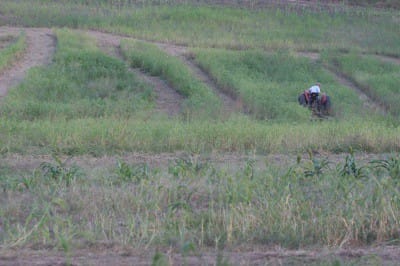
Roger Wells doesn’t pull any punches when he talks about the future of quail and quail hunting. A 34-year veteran of the wildlife profession, Wells, national habitat director for Quail Unlimited, said nothing in his career has come close to the challenges facing bobwhite restoration.
“Back when I first started working as a biologist, it was nothing to move 15 or 20 coveys of bobwhites a day without hardly working at it,” he said. “Now, I’m lucky to jump three or four in those same places. In my entire career, nothing has been more difficult for the wildlife community as bringing back quail to historic levels.”
The familiar bob-white! song of the South is still there, but it’s slowly fading into the history books.
So who, or what’s to blame? Many hunters place the blame squarely on the shoulders of predators. Predator numbers have indeed increased, but experts agree that predator control alone will have little effect on boosting quail numbers. Bill Palmer, a quail biologist with Tall Timbers Research Station, said the problem with predator control is that it is an endless cycle. Once you start, you can’t stop, or new predators will simply fill the void left by removing a few individuals.
“We have documented a wide variety of predators that eat quail and their eggs. Nest predation is perhaps the biggest threat, bigger than adult quail depredation, because so many different types of animals eat quail eggs,” said Palmer.
He said snakes take a heavy toll on eggs; so do rats and armadillos. Crows, jays and other scavenger birds will down an entire clutch if they have the chance. The real issue, said Reggie Thackston, private lands habitat coordinator for the Georgia Department of Natural Resources, is the continued loss of suitable habitat. That’s due in large part to changes in farming practices, as well as the complete loss of farmland to development.
“I grew up outside of Atlanta and I walked out my back door with my dogs and usually got into a couple of coveys every time I tried. What’s there now? Houses, shopping centers and parking lots,” he said. “That’s going on all over the South. We have lost millions of acres of wildlife habitat over the last three or four decades.”
Farms themselves have changed. A mix of grain fields, unkempt fencerows, fallow fields and young forests has been replaced by vast, tidy fields with virtually no edge cover. Farmers plow and plant right up to the edge of mature forests. Overgrown pastures have been converted to fescue or pine plantations, and second-growth forests have matured to where they offer no benefit to quail.
“Drive through the country these days and you’ll see pastures with nothing but cool-season grasses like fescue. They provide nothing that benefits quail,” noted Thackston.
Wells agreed. Even where fencerows and edge habitat remain, the amount of cover has dwindled. A 10-foot strip of cover creates easy hunting for a hungry skunk. Thackston added that the increased use of herbicides and insecticides has also contributed to the decline in quail. Bobwhite chicks rely on insects in the spring.
There is hope. Although Thackston and Wells agreed that quail will never return to the levels found in the 1940s and 50s, both said it is possible to see a significant increase in bobwhite populations throughout their historic range.
“It won’t be easy, that’s for sure,” said Thackston. “I do see a much greater interest from landowners, hunters and others for improving quail habitat, reducing soil erosion and improving air quality. They are all connected.”
He said private landowners in Florida and Georgia who have instituted intense management practices specifically for quail have indeed seen a drastic increase in the number of birds on their land. He agreed with Thackston that there is a future for quail and quail hunters in traditional strongholds like the southeast. However, he acknowledged that it’s an uphill battle, but it’s a battle worth fighting.
“We need to bring back quail not for us old-timers, but for our children and grandchildren,” he said. “It’s not about us anymore, it’s about them.”



